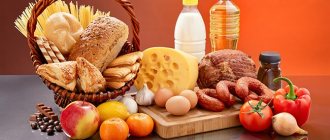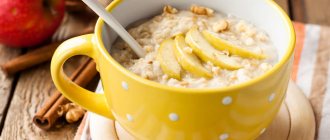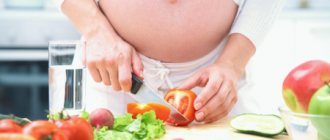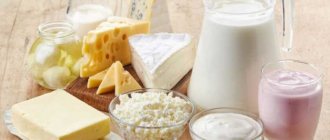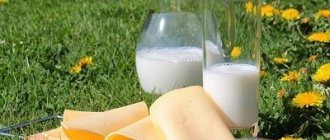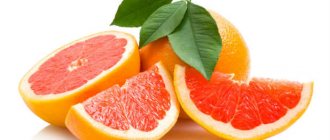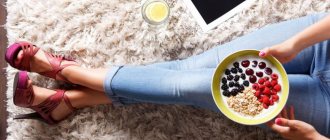Anemia leads the list of blood diseases. This disease can be described as follows: a syndrome in which the number of red blood cells decreases and the concentration of hemoglobin in the blood sharply decreases. This disrupts oxygen metabolism and the person begins to experience loss of strength, heart pain, drowsiness, and dizziness. In difficult cases, in the absence of treatment and proper nutrition, anemia leads to pulmonary failure, hypotension, and the development of cardiovascular diseases and cancer.
Doctors divide anemia into several types: hemolytic, iron deficiency, megaloblastic, aplastic, hornic, etc. In most cases (over 90%), diagnosis reveals iron deficiency anemia. Depending on the type and severity of the disease, patients are prescribed medications and a special diet is recommended.
The causes of anemia are most often genetics, diseases of internal organs, injuries or poor lifestyle. For example, people who have lost a lot of blood due to injury or surgery are at risk. Women with heavy menstruation are often susceptible to anemia. The cause of anemia can be gastritis, stomach ulcers, hemorrhoids, and cancer.
Poor nutrition, unbalanced diets and lack of vitamins also cause a drop in hemoglobin levels. For example, iron, folic acid, vitamins C and B directly affect the formation of red blood cells. Their lack in the diet of children and adults leads to the development of anemia. Therefore, the role of proper nutrition is very important in the treatment and prevention of the disease. Next we will tell you what products are necessary to prevent the risk of anemia.
Diet for anemia recommended foods and dishes
Snacks: various snacks, vegetable and leafy salads are especially recommended as a source of vitamins.
Bread and flour products: wheat and rye bread, various flour products - baked goods, biscuits, pies, cookies and others.
Soups: any soups with various cereals, noodles, legumes in broths, borscht, cabbage soup, okroshka.
Second courses:
-meat and fish dishes: various types of meat and fish, except very fatty ones, in any preparation, offal, ham, sausages, sausages, herring, balyk, fish caviar, canned food - sardines, sprats and other non-fish seafood.
-egg dishes: varied preparation.
-cereal dishes: various cereals, especially oatmeal and buckwheat, pasta. Legumes are allowed - in the form of puree or well-boiled.
-vegetable dishes: various vegetables in any culinary preparation. Be sure to consume some vegetables raw.
-dairy products: all dairy products, always cottage cheese and hard cheese. -sauces: various sauces are allowed - milk bechamel, sour cream, red meat, milk and egg and others. -spices: various spices, but in moderation.
Dessert:
-fruits: a variety of fruits and berries, in any preparation, some of them must be raw.
-sweets: jam, honey and others. -drinks: a variety of drinks, but be sure to include rosehip infusion, wheat bran, fruit and vegetable juices.
Fats: butter and vegetable oil.
What to include in children's diet
The diet of children, if they are still small, is slightly different from the adult diet:
- if the baby is less than six months old, it is better to feed him breast milk, but the mother should eat iron-containing foods (beef, broccoli, oatmeal, apples, etc.);
- when it is already possible to introduce complementary foods, give meat puree, pureed broccoli, zucchini, juices diluted with water;
- from one year to 3 years, cereals, chopped meat, applesauce, carrot juice, and bran bread are allowed;
- from 3 to 6 years old, you can supplement the diet with liver, eggs, dried apricots, prunes, fruits and vegetables;
- Children over 6 years old, in addition to the above, are allowed seafood and caviar.
Children should not be given mushrooms or offal. They may be too hard to digest. When a child is out of infancy, you should not give him milk and often offer dairy products, especially those with a high fat content.
Baby food recommendations
There are much fewer problems with food for children. They can be given a wider variety of foods.
It is important to organize a varied and appetizing menu so that the child has a desire to eat something healthy and tasty.
Make sure that your child eats:
- fruits;
- eggs;
- vegetables;
- meat dishes.
If anemia is in the middle stage, then it is better to avoid large amounts of fat. Instead, include foods rich in iron, vitamins A, B and C. Liver, tongue, legumes, cereals, pureed vegetables and stews are great options. If you prepare these products correctly and in an original way, children will eat them with great pleasure.
To compensate for the missing vitamin A, add sea fish to your daily diet. Vitamin B is obtained from beef, prunes and legumes.
If children refuse to eat liver, then you will have to resort to small tricks. To do this, it is crushed and added to purees, porridge and other dishes. Adult children are recommended to make homemade liver pates and prepare casseroles from the liver. It is not recommended to fry it.
The problem of anemia is typical for that category of children who adhere to a too monotonous diet. There is nothing wrong with a child loving delicious meat sausages with durum pasta, yoghurt or other healthy dishes. Some people may eat this several times a day. It’s easier for parents because they don’t have to invent anything. But in a monotonous diet, there is a lack of a number of vitamins, minerals and trace elements that can only be obtained from other foods that children do not eat.
Another common mistake parents make when adjusting menus for children with anemia is trying to force them to eat this or that dish. When a baby is forced to eat something, this pushes him away from food even more. Better try cooking something together, let him take part in the cooking. The wafting aromas will stimulate nutrition, and participation in the process will make you really want to try what he prepared with his own hands.
The essence of proper nutrition when anemia or anemia occurs in people of different ages is to have a varied menu. Use different tasty and appetizing foods. The list of products is extensive, which allows you to choose the optimal list of dishes for your diet.
Proper nutrition is not a panacea against anemia. To cope with this disease, you need to determine the root cause of its development. By getting rid of it, you can return to normal life, eliminate unpleasant symptoms and restore all the functions of your body. Healthy food can maintain health and partially compensate for the lack of a number of vitamins, minerals and trace elements. Although sometimes it is impossible to do without the help of medications.
Proper and healthy food is always good for everyone. By adhering to nutritional rules, you can prevent a number of dangerous pathologies and diseases, including anemia. But if you notice the first signs of anemia, immediately seek help from a qualified doctor. Only he will make an accurate diagnosis and give specific recommendations on treatment and nutrition to combat the disease.
Thank you all for your attention! Be sure to subscribe, don’t forget to leave comments, ask questions that interest you and invite your friends to discuss!
An example menu for proper nutrition with low hemoglobin
The menu for proper nutrition with low hemoglobin is compiled taking into account the fact that per day there should be:
- breakfast,
- dinner,
- dinner,
- 1 or 2 snacks.
For the latter you need fruits, nuts, you can eat cheese, cottage cheese or dry cookies with weak tea. They usually have a snack between breakfast and lunch, if the first one was modest. The second small meal is an afternoon snack, that is, a couple of hours before dinner.
There is no need to try to eat a lot by force. Let the portions be small, but the food be varied, healthy and tasty. The latter is also important, because with anemia, a good appetite is rare, and pleasant dishes will help to kindle it.
It is worth remembering about the drinking regime. You need 1.5-2 liters of liquid per day. This can be not only water, but also, for example, rosehip decoction, mineral water, herbal tea.
Breakfast

Breakfast options may be as follows:
- oatmeal with water, a piece of rye bread with cheese, a cup of coffee, an apple;
- ¼ piece of pita bread with fish and herbs, 250 ml of orange juice, boiled egg;
- buckwheat with beef goulash, weakly brewed green tea, whole grain bread sandwich with chicken liver.
It is advisable to eat heavily in the morning, as this is the time for the main meal. If the body has not yet woken up, in order to have a full breakfast, you still need to at least drink half a glass of juice, eat a small sandwich with sausage or liver, and a couple of spoons of porridge. You can learn to eat gradually in the morning, with small amounts of food. And in order for your appetite to appear earlier, you should get enough sleep.
Dinner

Lunch should consist of 3-4 dishes, and each requires foods high in iron:
- To start the meal, you can prepare a salad of fresh cucumbers, tomatoes with dill and a spoon of olive oil. Or make it Greek - with vegetables, herbs and cheese. Warm salad with chicken liver or cod liver (plus egg and green onions), beetroot salad with cheese and cashews will be useful.
- The first course can be prepared with meat, mushroom or vegetable broth. This is borscht with beef, bean or lentil soups, kharcho with rice, but without an abundance of spicy seasonings.
- The main course must include meat or fish and a side dish. For example, baked pork with peas or stewed navaga with rice. Other options are boiled potatoes with liver, pasta with duck or turkey, cauliflower with cutlets, barley porridge with chicken. Side dishes can be repeated throughout the week, but it is better to change the protein part of the second course daily.
- For dessert you can eat a piece of halva, an orange, a handful of dates. Or cook compote, berry jelly, but with a small amount of sugar.
Dinner
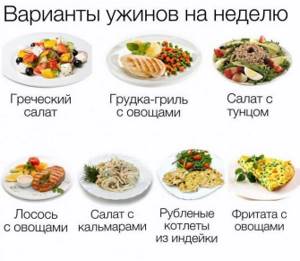
Dinner should consist of protein foods, but quite light, as well as vegetables:
- omelette and seaweed;
- squid and fresh cucumber salad;
- zucchini pancakes and a piece of boiled beef;
- chicken cutlet, stewed zucchini with carrots and 1 egg.
Here it is important not to overdo it with the quantity and eat 2 hours before bedtime. If you have a heavy dinner late, your sleep will be restless. And in the morning you won’t want to have breakfast, and thus your routine will be disrupted, which is not good for anemia.
What is pathology
Anemia, or anemia, is a set of symptoms of a number of diseases, accompanied by a decrease in the concentration of hemoglobin in the blood while simultaneously reducing the quantity and changing the qualitative composition of red blood cells.
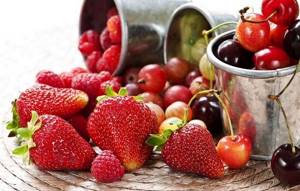
There are several reasons for the development of anemia. The most common causes of anemia include:
- large blood loss caused by surgery, various traumatic injuries, peptic ulcers and hemorrhoids, as well as heavy menstrual bleeding in women;
- mental disorders, negatively affecting the general condition of the body, reducing immunity, often lead to a decrease in hemoglobin and the development of anemia;
- malignant neoplasms, severe infectious (including those caused by parasites) diseases develop against the background of anemia;
- restriction of physical activity or constant physical/mental overload, contributing to the rapid consumption of nutrients and the development of anemia;
- renal failure and gastrointestinal pathologies;
- Poor nutrition leads to a decrease in iron content in the blood and, as a result, the development of anemia.
The above causes of anemia provoke the development of signs of oxygen starvation and insufficient nutrition of blood cells, which are often confused with everyday fatigue. In addition, with anemia, the patient is diagnosed with a number of other symptoms:
- a state of indifference, loss of interest in what is happening around;
- frequent headaches;
- nausea and causeless dizziness;
- drowsiness;
- pale skin;
- difficulty defecating;
- temperature rise to 38 C° for a long time;
- increased dryness of hair and brittle horny plates, dental diseases;
- excessive dryness of mucous membranes.
For children
Nutrition for anemia in children has a number of features. Iron deficiency in the body of a newborn child is determined by the level of iron supply to the fetus during intrauterine development and the iron content in the mother's breast milk or in formulas after birth. With the standard development of full-term children, depletion of iron reserves occurs by the 4-5th month of life, in premature infants - by the 3rd month of life. From this period, the child’s body depends only on the amount of iron supplied with food.
The best option is to continue breastfeeding the child, since, despite the low iron content in breast milk (1.5 mg/l), its bioavailability is at the level of 60%. This is facilitated by the form of iron-containing protein as lactoferrin .
Along with breast milk, the child’s diet during this period should be expanded through complementary feeding. However, most parents use unadapted dairy products (kefir, milk) for these purposes, which contributes to the development of iron deficiency in the child’s body due to the appearance of microdiapedetic intestinal bleeding. This is especially true for children who are on early artificial feeding with a late (after 8 months) introduction of meat complementary foods.
When artificially feeding, especially in high-risk children (premature babies, twins, low-weight babies), it is recommended to use adapted infant formulas fortified with iron - Similac with iron , Detolact , Nutrilon 2 , Abbott , Nestogen , Samper Baby 1 and 2 . In full-term babies, these mixtures are recommended to be used from the 4th month of life, in premature babies - from the 2nd month.
The inclusion of iron-fortified complementary foods (instant cereals, fruit and vegetable purees, fruit juices) in children's diets significantly increases the intake of iron from food. It is extremely useful to include in the diet of a child from 5-6 months of age meat and vegetable products, complementary foods - canned meat and vegetable products, which are produced by various brands, "Samper", "Gerber", "Beach-Nut", "HiPP", Heinz", "UniMilk", "Kolinska" ").
To cover physiological needs, older children need to receive with food:
- 1-3 years - 1 mg/kg iron per day;
- 4-10 years - 10 mg/day;
- after 11 years - 18 mg/day.
Girls require special attention during pubertal development, which is associated with the onset of menstruation, and for many, poor nutrition due to the desire to lose weight. Therefore, during this period, it is especially important for parents to monitor the child’s diet and include all the necessary food products. At the same time, it is recommended to take iron-containing medications. For young children - in the form of syrup/drops - Lek (syrup), Hemofer (drops), Actiferrin (drops, syrup), Ferrum Maltofer (drops, syrup). For teenagers - Ferrum Lek (chewable tablets at a dosage of 100 mg).
What is the diet for anemia in adults?
The main symptoms of anemia are: weakness, fatigue, frequent headaches, tinnitus, nausea, drowsiness, dizziness, shortness of breath, brittle hair and nails, dry mouth and a sharp change in taste preferences.
Types of anemia:
- Iron deficiency – deficiency of iron in the body;
- Hemolytic – rapid destruction of red blood cells;
- Folic deficiency – lack of folic acid and vitamin B12 in the body;
- Sickle cell – abnormal production of hemoglobin in the body under the influence of mutations;
- Aplastic – impaired bone marrow functionality;
- Posthemorrhagic – a consequence of heavy blood loss.
The diet for anemia, Table 11 according to Pevzner, is enriched with iron (daily intake of at least 20 g), amino acids, proteins and vitamins. The diet for iron deficiency anemia is aimed at replenishing the body with the necessary vitamins and microelements that provoked the development of the disease, namely: iron, folic acid, vitamins B12, C.
Therapeutic nutrition for iron deficiency anemia should be rich in foods with a high content of quickly absorbed iron (red meat, oatmeal and buckwheat, porcini mushrooms, seafood, offal, fruits, berries, dried fruits, honey).
A diet for hemolytic anemia involves consuming foods that take part in hematopoiesis and affect the rapid absorption of iron in the body. The diet should include foods containing cobalt (kidneys, liver, rose hips, currants, milk), copper (mushrooms, cereals, legumes), zinc (yeast, cheeses, mushrooms), manganese (legumes, greens).
During pregnancy, it is important to monitor the level of hemoglobin in the blood. Its deficiency can negatively affect the formation of the child’s internal organs.
The level of hemoglobin in the blood of a pregnant woman is determined after a general blood test. The diet for anemia in pregnant women consists of limiting foods containing calcium (dairy and fermented milk products). Calcium affects poor absorption of iron in the body. In addition to medications, pregnant women simply need to follow a diet, which is prescribed for 3 to 6 months. The diet includes: lean meat, poultry, fish and seafood, offal, vegetables, fruits, wholemeal bread, dried fruits, berries, nuts and honey.
An important rule of the Table 11 diet according to Pevzner is a balanced diet. When dieting, you should eat approved foods, which in combination will help normalize iron metabolism in the body. You should not overeat while on a diet, as it will not speed up the healing process and will cause you to gain excess weight. During the diet, it is recommended to additionally take vitamin and mineral complexes, especially those containing folic and ascorbic acids.
Permitted and prohibited products
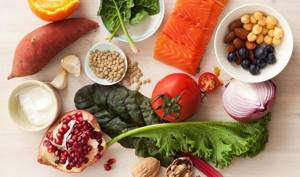
Diet for anemia - allowed foods:
- Meat (beef, veal, lamb, pork, rabbit);
- Poultry without skin (turkey, chicken, duck);
- Fish and seafood;
- By-products (liver, heart);
- Cereals and cereals (oats, buckwheat);
- Peas, lentils;
- Mushrooms (especially porcini mushrooms);
- Bread and bakery products made from wholemeal flour (bran, rye, whole grain);
- Low-fat dairy and fermented milk products;
- Vegetables (potatoes, cucumbers, tomatoes, squash, carrots, bell peppers, broccoli, onions, garlic);
- Fruits (citrus fruits, apples, pears, plums, apricots);
- Greenery;
- Berries;
- Dried fruits;
- Natural honey;
- Brewer's baker's yeast.
In between meals, while following a diet for anemia, it is recommended to drink still mineral water, freshly squeezed juices (orange, grapefruit, pomegranate) without sugar, berry fruit drinks, rosehip decoctions
Diet for anemia - prohibited foods:
- Bakery products made from wheat flour;
- Canned food;
- Pickles;
- Marinades;
- Tangerines;
- Spinach;
- Sorrel;
- Asparagus;
- Rhubarb;
- Cabbage;
- Beans;
- Nuts;
- Bran;
- Egg yolk;
- Rice;
- Chocolate;
- Tea coffee.
The above products contain oxalates, which interfere with the absorption of iron in the body, which is unacceptable when following a therapeutic diet for anemia.
Recipes to increase hemoglobin levels in the blood
There are many recipes that help increase hemoglobin in the blood.
Today we will focus on the most effective:
- We take half a kilogram of raisins, dried apricots, walnuts and prunes, as well as one lemon. We twist it all through a meat grinder, add approximately 350 g of honey. Place the resulting mixture in a tray or jar and consume 2 tablespoons 3 times a day before meals.
- We prepare beetroot and carrot juice with honey every day. For this we need 50 g of beet juice, 100 g of carrot juice and 1 tablespoon of honey. All ingredients are thoroughly mixed and a delicious sweet drink is obtained. It is recommended to drink this juice in the first half of the day for better absorption of the vitamins it contains.
- Half a glass of apple juice should be mixed with the same amount of cranberry juice. Add 1 tablespoon of beet juice to the resulting drink - and the iron-rich juice is ready! It is recommended to drink it at least 4-5 times a week.
- Grind a glass of walnuts and half a glass of raw buckwheat with a coffee grinder until it becomes flour. Add 100 g of honey and mix thoroughly. The resulting mixture should be consumed 1 tablespoon 3 times a day before meals.
- The simplest recipe that quickly increases hemoglobin is a drink consisting of equal parts of natural apple, carrot, pomegranate, beet and grape juices. You can add sweetness to the drink with 1-2 tablespoons of honey.
Nutrition for women
The diagnosis of anemia in women of reproductive age is especially common. If a general blood test shows a low hemoglobin level, you should consult a doctor to find out the reasons and prescribe comprehensive treatment. It will be selected depending on the etiology of the disease and the degree of drop in iron levels in the blood.
Along with the treatment, the doctor will recommend a special diet designed to improve the intake of iron, vitamins and microelements into the body.
Diet alone for low hemoglobin in women cannot always qualitatively increase its level, but the role of nutrition in anemia is very significant.
From this article you will learn what is better for a woman to eat if she has low hemoglobin in order to improve her well-being and help the body replenish the missing components from food.
What was wrong with the food?
In some cases, the degree of anemia can be reduced by changing the daily menu: this applies exclusively to external causes of anemia, when it is associated with a lack of intake of necessary substances from food into the body.
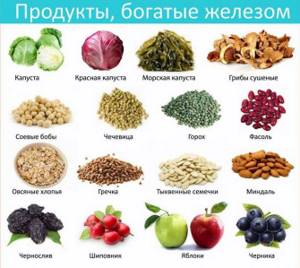
One-time errors in nutrition will not be fatal to the body, but if the diet and composition of food are chosen incorrectly, the consequences will not take too long to occur.
Possible nutritional problems that can cause or worsen a drop in hemoglobin levels in women:
- improperly balanced diet;
- long-term vegetarianism, veganism;
- severe physical activity with inadequate nutrition;
- malnutrition, starvation;
- strict diets.
Functions of special nutrition for low hemoglobin in women
How to lose weight with low hemoglobin
It is possible to lose weight with low hemoglobin if you eat low-calorie foods but high in iron:
- kohlrabi;
- all types of liver, except pork;
- beef, veal;
- chicken, turkey;
- eggs,
- mushrooms,
- river fish.
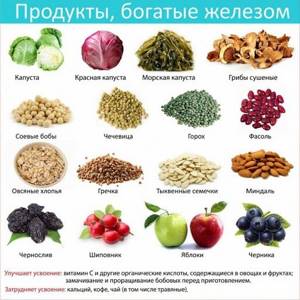
The plant component of dishes is also important, because these are vitamins and proper carbohydrates that make the diet balanced:
- oatmeal and buckwheat;
- apples, pomegranates;
- cranberries, cherries, blueberries;
- dried fruits;
- cucumbers, red cabbage, pumpkin, beets, carrots, tomatoes;
- nuts and legumes.
Bread with bran, dry biscuits and lavash can also be eaten, but preferably in the first half of the day. All of these products are low-calorie, with rare exceptions. But sweet prunes and dried apricots, fatty nuts are consumed in small quantities for snacking. And with moderation they will not add weight.
It is important for those losing weight to drink a lot, which is also necessary for anemia. For this, in addition to clean water, rosehip infusion and linden blossom tea are suitable. Physical activity will help you lose weight, speed up your metabolism and saturate your blood with oxygen. You can take walks in the fresh air.
In the first degree of anemia, proper nutrition will help get rid of it without drugs. And sticking to such a diet is not difficult. After all, it consists of delicious dishes, and quite a lot is allowed.
Important Limitations
Diet therapy aimed at anemia has its own rules, features, limitations and recommendations. Even healthy foods can have negative effects on your body. Therefore, try to consume only what your doctor and nutritionist approve of.
In order not to name a whole list of foods that cannot be eaten during a diet against anemia or should be limited, let’s consider the most harmful substances.
Patients should avoid consuming:
- polyphenols;
- eggs;
- oxalates;
- calcium;
- phytic acid.
These substances contribute to the disruption of iron absorption. Therefore, if you are diagnosed with an iron deficiency form of anemia, which is the most common in the world (95% of all cases of anemia), then limit the foods and content of these components in your diet.
Comments from nutritionists
Strict vegetarianism is one of the risk factors for the development of both latent iron deficiency (a decrease in the iron content in the depot and its transport level in the absence of changes in hemoglobin and red blood cells) and iron deficiency anemia. Due to the long-term, almost complete absence of foods containing heme iron in the diet, many vegetarians develop iron deficiency. Non-heme iron found in grains and vegetables has low absorption.
An additional negative aspect of eating vegetarians is the higher fiber content in food, which makes it difficult to absorb iron. Therefore, those who practice this type of diet can be recommended to enrich their diet with foods rich in ascorbic/citric acid, which significantly improve the absorption of iron. To prevent the development of anemia, it is recommended to periodically take iron-containing drugs, one of which is the combination drug Ferro-Folgamm , containing anhydrous iron sulfate, cyanocobalamin , folic and ascorbic acid .
Necessary conditions for the absorption of iron
The daily requirement for iron for men is 10 mg, for infants - 4 mg, for adolescents - 18 mg, and the same for women. In the second half of pregnancy, the rate almost doubles.
At the early stage of appearance and for prevention, it is necessary to consume foods rich in the missing microelement.
There are two types of iron: heme and non-heme. The first is part of hemoglobin. A large amount is found in meat, fish, liver, heart, tongue and is absorbed by the body by 30% (the highest level in veal). This process is practically unaffected by other products. Non-heme iron is present to a greater extent in vegetables, dried porcini mushrooms, brewer's yeast, cocoa, chicken and quail egg yolks, and seaweed. The degree of absorption of microelements from products of plant origin is no more than 5% and depends on many factors, so the diet for iron deficiency anemia should provide a number of useful substances.

Meat should be the main component of the menu during a diet
- Copper stimulates hematopoiesis. The daily requirement of an adult for a microelement is 2-3 mg. The diet should include beef, kidneys, liver, grains, cereals, legumes, strawberries, wild strawberries, cranberries, black currants. Almonds contain large amounts of copper, which are great for snacking.
- Manganese stimulates oxidative processes and affects the formation of hemoglobin. The daily requirement is 5-7 mg. These are cereals (rice, buckwheat, millet, pearl barley, oatmeal), grains, legumes, greens, sorrel, beets, pumpkin, cranberries, raspberries, black currants, yeast, offal, cheese, legumes, cereals, mushrooms, eggs, chicken.
- Zinc supports the formation of red blood cells. The daily requirement is 10-15 mg. The greatest amount of it is contained in seafood (especially oysters and squid), citrus fruits, apples, and green vegetables.
- Cobalt is found in vitamin B12 and promotes the absorption of iron in the intestines. The daily requirement is 0.1 mg. Contained in liver, kidneys, fish, legumes, various cereals, grains, gooseberries, black currants, raspberries, pears, cherries, apricots, almonds, peanuts.
- Vitamins C and B9 (folic acid) improve iron absorption. Fresh fruits and vegetables are rich in vitamin C, and folic acid is found in acceptable amounts in legumes, grains and yeast.
Iron absorption is impaired by calcium, phosphorus, and tannins, so it is worth limiting the consumption of dairy products and tea.

Fresh fruits and juices are rich in vitamin C, essential for iron absorption
Iron-rich foods - list
Eating the right foods rich in iron will help you get rid of iron deficiency anemia.
List of foods rich in iron
Animal origin:
- Meat.
- Fish.
- Cream.
- Oil.
- By-products - liver, heart, tongue, kidneys.
Plant origin:
- Cereals - buckwheat, legumes.
- Vegetables - tomatoes, beets, potatoes, herbs, carrots, bell peppers.
- Fruits - pomegranate, pear, currant, apple, plums, apricots, quince, persimmon.
- Berries - currants, blueberries, wild strawberries, strawberries.
- Mushrooms.
Beverages:
- Plum juice.
- Tea with honey and lemon.
- Grape-apple juice.
- Tomato juice.
- Carrot juice.
- Beetroot juice.
Iron content in products (per 100 g):
- 72 mg – Beans
- 51 mg – Hazelnuts
- 45 mg – Oatmeal
- 37 mg – Skim milk cheese
- 31 mg – Buckwheat
- 29.7 mg – Pork liver
- 20 mg – Peas
- 19 mg – Brewer's yeast
- 16 mg – Sea kale
- 15 mg – Apples (dried fruit)
- 12 mg – Dried apricots
- 9 mg – Blueberry
- 9 mg – Beef liver
- 6.3 mg – Heart
- 5 mg – Beef tongue

Products consumed
Nutrition plays a very important role in anemia; foods consumed during this pathological condition should increase hemoglobin and normalize the patient’s condition. So what should the diet of a person with this diagnosis be?
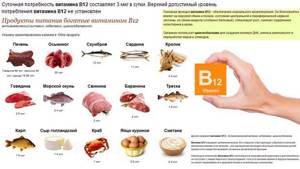
Medical nutrition during anemia
Anemia can occur both due to blood loss and hematopoiesis disorders. In addition, this disease can also be hemolytic. During disturbances, the patient usually experiences many unpleasant symptoms. This applies to dizziness, shortness of breath, severe weakness, tachycardia, low blood pressure and some other pronounced symptoms.
As mentioned above, therapeutic nutrition plays a very important role here. It must provide the human body with those substances that hematopoiesis urgently needs; the diet must take into account the pathological condition of the patient, which actually causes anemia. In addition, it should be taken into account that food should be optimally high in calories.
So, nutrition for anemia should include as much protein as possible, that is, up to 150 g. It is necessary that most of it be complete. In this case, curd products, fish, and meat are perfect.
Thanks to it, iron is easily absorbed.
But fats can have a depressing effect on hematopoiesis. For this reason, their intake should be limited. You should eat fatty meat, fish, and sausages as little as possible. Beef and lamb fats are also not acceptable to a person who has been diagnosed with anemia.
The importance of dieting
Symptoms of this disease are reduced to loss of appetite, dyspepsia, decreased performance and weakness, and changes in taste. To get rid of them it is important to organize food.
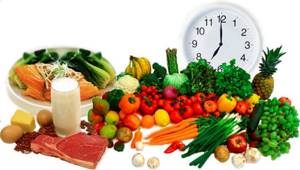
Diet is the first path to recovery
Otherwise, the process will progress, leading to the development of serious health problems.
Nutritional Features
The daily iron requirement depends on the physiological state, the presence of concomitant diseases, working conditions, and the degree of physical activity.
The more intense a person’s activity, the higher his need for the mineral, since the heart works harder, hematopoiesis increases, and more oxygen is consumed.
Iron requirements for different population groups:
| A group of people | Age | Norm per day, mg |
| Newborns | 0-6 months | 0,26-0,28 |
| Child | 7-12 months | 11-13 |
| 1-3 years | 6-11 | |
| 4-8 years | 11-16 | |
| 9-12 years | 9-14 | |
| Boys | 13-18 years old | 12-19 |
| Girls | 13-18 years old | 15-27 |
| Men | From 19 years old | 8-15 |
| Women | 19-49 years old | 18-32 |
| From 50 years old | 8-14 | |
| Pregnant | any | 27-50 |
| Women during lactation | Any age | 25-35 |
Until the time has come for physical activity and the baby receives plenty of iron from the mother's milk, there is no need for additional sources. It will appear when the child begins to walk, run, and wave his arms.
Reviews and results
- “... I suffer from heavy periods for 5-6 days, so this diet therapy is a salvation for me. After 3-4 weeks of taking iron supplements and dietary nutrition, everything returns to normal, but I am always afraid of my critical days”;
- “...My daughter and her friends went on some special diet to lose weight. Despite my persuasion, I ate this way for more than a month, until I started fainting. The doctor was called. The result is anemia, low hemoglobin, headaches, and changes in the skin. They prescribed a diet, I buy all the products containing iron, but I’m afraid that after recovery she won’t find another diet.”
Iron deficiency anemia diet principles
Iron deficiency anemia is a pathology characterized by a decrease in the level of hemoglobin in the blood, as well as the number of erythrocytes (red blood cells).
Many women, at least once in their lives, have experienced the condition characteristic of iron deficiency anemia.
Many cases of decreased hemoglobin levels have been recorded in women who adhere to a diet with an unbalanced diet. Perhaps the desired weight loss was achieved in this way, but the price of such a result is too high.
Anemia belongs to a group of diseases that are dangerous to the central nervous system. The development of the disease can serve as the root cause of low oxygen content in the body (hypoxia), as a result of which nerve cells die. Hypoxia leads to impaired mental activity.
Patients often do not even know about their pathological condition. The condition characteristic of anemia can be determined based on clear signs.
Symptoms of anemia:
- increased fatigue;
- rapid decrease in physical activity;
- cardiopalmus;
- weakness of muscle tone;
- constant drowsiness;
- fragility and separation of nail plates;
- dry and thinning hair shafts;
- pale skin;
- periodic dizziness;
- shortness of breath while walking;
- irritability.
Consequences of not following the diet
The consequences of iron deficiency anemia include progression of the disease. Very low hemoglobin can cause:
- myodystrophy;
- atrophy of the mucous membranes of the digestive tract, genital organs and respiratory system.
In addition, low hemoglobin levels affect the cardiovascular system and lead to the development of pathological conditions. We should not forget about the weakening of the immune system, which is fraught with the occurrence of various infectious diseases.
What foods and vitamins are useful?
Nutrition for anemia requires the inclusion of foods rich in iron in the menu. What foods contain this important component of hemoglobin? Nutritionists say that it is useful to eat the following foods for anemia:
- meat: liver; rabbit, turkey, chicken, lamb, cattle meat;
- dietary eggs;
- cereals: buckwheat, oat flakes, millet, barley;
- sea fish: mackerel, with red meat, sturgeon caviar;
- berries: blueberries, strawberries, raspberries, grapes, watermelon, gooseberries, cherries, strawberries;
- fruits: peach, apple, quince, apricot, plum, persimmon, banana;
- bread made from second-grade flour;
- greens: spinach, sorrel, lettuce, dill;
- vegetables: beets, tomatoes, carrots, cabbage, zucchini, squash, onions, garlic.
Elements that improve blood quality in people with anemia include legumes, yeast for baking and beer, cottage cheese, rice and pasta.
Regular drinking of low-mineralized iron sulfate-hydrocarbonate-magnesium water helps improve the absorption of iron during anemia.
Dark honey, which consists of 40-60% fructose, is indispensable in the diet for anemia.
If you have anemia, it is important to include in your diet foods containing sufficient amounts of vitamins:
- Ascorbic acid, which improves the quality of iron and helps its absorption, is found in natural raw materials, recommended for consumption raw. These are black currants, citrus fruits, bell peppers.
- Insufficient cobalamin content (B 12) leads to anemia. A healing drink made from a glass of milk, 1 tsp, can restore vitamin imbalance. brewer's yeast and 1 tsp. honey
- Pyridoxine (B6), promoting protein absorption, increases hemoglobin concentration. It is found in legumes, nuts, meat and fish products.
- Folic acid (B9), included in citrus fruits, green vegetable leaves, liver, yeast, bee products, and nuts, prevents the development of anemia.
For anemia in adults, a daily balanced diet of consumed foods should contain approximately 120 g of proteins, 40 fats, 450 g of carbohydrates, and at least 20 mg of iron.
For better absorption of iron, it is better to combine the above healthy foods for anemia with those rich in vitamin C. For example, meat products with citrus juice, porridge with pomegranate.
Fully or partially limited products
Fatty meats and fish, animal and cooking fat, culinary, spices, cakes and cream pies, fatty and hot sauces are completely excluded from the diet.
Limit foods rich in calcium (parsley, milk and dairy products), tannin and caffeine (strong tea, coffee, Coca-Cola, chocolate) as they slow down the absorption of iron.
Alcohol intake is completely excluded, since ethyl alcohol affects the liver and disrupts the absorption of flavocins and iron.
Table of prohibited products
| Proteins, g | Fats, g | Carbohydrates, g | Calories, kcal | |
Nuts and dried fruits | ||||
| nuts | 15,0 | 40,0 | 20,0 | 500 |
Cereals and porridges | ||||
| wheat bran | 15,1 | 3,8 | 53,6 | 296 |
Confectionery | ||||
| cake | 3,8 | 22,6 | 47,0 | 397 |
Chocolate | ||||
| chocolate | 5,4 | 35,3 | 56,5 | 544 |
Raw materials and seasonings | ||||
| mayonnaise | 2,4 | 67,0 | 3,9 | 627 |
Dairy | ||||
| milk | 3,2 | 3,6 | 4,8 | 64 |
| sour cream 30% | 2,4 | 30,0 | 3,1 | 294 |
Cheeses and cottage cheese | ||||
| cheese | 24,1 | 29,5 | 0,3 | 363 |
Meat products | ||||
| pork fat | 1,4 | 92,8 | 0,0 | 841 |
Oils and fats | ||||
| cooking fat | 0,0 | 99,7 | 0,0 | 897 |
| rendered pork fat | 0,0 | 99,6 | 0,0 | 896 |
Alcoholic drinks | ||||
| white dessert wine 16% | 0,5 | 0,0 | 16,0 | 153 |
| vodka | 0,0 | 0,0 | 0,1 | 235 |
| cognac | 0,0 | 0,0 | 0,1 | 239 |
| liquor | 0,3 | 1,1 | 17,2 | 242 |
| beer | 0,3 | 0,0 | 4,6 | 42 |
Non-alcoholic drinks | ||||
| cola | 0,0 | 0,0 | 10,4 | 42 |
| coffee | 0,2 | 0,0 | 0,3 | 2 |
| Pepsi | 0,0 | 0,0 | 8,7 | 38 |
| black tea | 20,0 | 5,1 | 6,9 | 152 |
| energy drink | 0,0 | 0,0 | 11,3 | 45 |
| * data is per 100 g of product | ||||
Microelements to enhance hematopoiesis
The following microelements stimulate the formation of red cells and hemoglobin:
- zinc: offal, beef, mushrooms, eggs, beans, cereals, yeast, Dutch cheese;
- copper: cereals, black currants, watermelon, cranberries, strawberries, beans, liver, beef, horseradish;
- cobalt: beans, cereals, nuts, fish, offal, milk, gooseberries, parsley, apricots, cherries, pears, raspberries;
- manganese: beans, greens, cereals, pumpkin, raspberries, beets, black currants, cranberries.
Microelements are very important in the treatment and prevention of anemia
Useful video
Watch the video about the symptoms of iron deficiency anemia:
Similar articles
- Hemoglobin and weight loss: rules for creating a diet for...
If hemoglobin has dropped sharply, weight loss will be more difficult. You need to create a diet taking into account your level. For example, if it is low, you should include meat and vegetables in the menu, but you need to be careful with kefir. Read more - Tests for weight loss: which ones need to be taken - blood,...
Taking tests when losing weight is necessary to identify the cause of weight gain, as well as foods that provoke weight gain (there is a test for food intolerance and saliva). For girls and men, a blood test for hormones and testosterone is required. There is also a genetic one. With an exact reason, the before and after results will not be long in coming. Read more
- Weakness when losing weight: main cause, symptoms...
The reasons why weakness occurs when losing weight lie in the lack of energy due to sudden weight loss and lack of calories. Symptoms include lethargy and inability to do simple housework. Read more
Tips for older people
With anemia, older people have their own dietary requirements. Anemia is considered a common pathology of elderly and senile people. This is explained by the onset of a sedentary lifestyle, a whole bunch of chronic diseases and a reduction in the functions and capacity of the immune system.
Here, doctors give important recommendations on how to eat. It is important not to allow attacks of hunger, but also not to overeat. That is, you should eat regularly, but in small portions.
This rule is due to the fact that organs and systems begin to age. Physiologically, the digestive system is not able to function in the same way as in young people. Therefore, overeating overloads the system, and fasting negatively affects the further digestibility of food.
There are no specific prohibitions on eating food. But it’s better to focus on:
- high-quality lean meat;
- dairy products;
- fruits;
- greenery;
- fresh seasonal berries and vegetables.
It is important to get all the necessary vitamins for anemia in sufficient quantities. Therefore, switching to a vegetarian menu is considered a mistake. An elderly body cannot quickly and effectively adapt to a new diet, so this will negatively affect its condition.
Try to eat 2–4 eggs per week, eat more buckwheat, beets and cabbage. But you should give up legumes, because they are poorly absorbed by the body at this age.
A good solution would be to grind healthy plant products using a blender or meat grinder. This will allow people who have digestive problems or weak teeth to eat such food. Grinded and chopped food is digested faster and requires less effort and energy.
Sample menu
| Breakfast | Lunch | Dinner | Afternoon snack | Dinner | |
| Monday | Curd mass with raisins, white bread with butter, boiled egg, compote or rosehip decoction | Sandwich with boiled sausage, berry jelly | Pea soup with meat broth, vegetable stew, bread, compote | Fruit jelly, bun, natural lemonade | Cottage cheese casserole, apple jam, rosehip infusion |
| Tuesday | Oatmeal with blueberries, omelette, butter bun, chicory coffee drink | Bun with fruit filling, rosehip infusion | Cabbage soup with fresh cabbage, steamed cutlets with buckwheat, bread, berry juice | Grated carrot salad, apple jam pie, berry juice | Omelet, sandwich with boiled sausage, apple juice |
| Wednesday | Cheesecakes with sour cream, fresh apples or apple jam, fruit tea | Boiled meat sandwich, fruit jelly | Chicken vermicelli soup, stewed green beans, boiled beef, buckwheat bread, compote | Apple pie, kefir | Meat pie, cucumber salad, tomato juice |
| Thursday | Rice milk porridge with dried fruits, white bread with butter, compote | Pie with apple filling, fruit tea | Borscht with sour cream, boiled chicken with a side dish of fresh vegetables, bread, rosehip infusion | Fruit mousse, bun | Liver pie, fresh kaput salad, apple juice |
| Friday | Wheat flakes with milk or yogurt, boiled egg, white bread with boiled sausage | Butter bun, fruit jelly, compote | Solyanka with meat broth, steamed fish with broccoli puree, buckwheat bread, berry juice | Fresh apple, drinking yoghurt or fermented baked milk | Liver pancakes, fresh apple or pear, jelly |
| Saturday | Pancakes with cottage cheese, sour cream and berry jam, fruit tea | Pie with meat filling, rosehip decoction | Rice soup with chicken broth, baked fish with vegetables, bread, compote | Salad of fresh apples and bananas, dressed with natural yoghurt, bun, tea with lemon | Meat casserole, baked apple, peach juice |
| Sunday | Buckwheat porridge with milk, fresh apple, white bread with butter, chicory coffee drink | Sandwich with fish, berry jelly | Mushroom soup with meat broth, cabbage and turkey stew, buckwheat bread, rosehip infusion | Fresh cabbage salad, bread, jelly | Pancakes with meat, fresh apple or peach, berry juice |
When creating a menu for older people, one should take into account the high likelihood of gastrointestinal disorders such as constipation. Therefore, it is necessary to additionally introduce dried apricots, prunes, and beets into the diet, and increase the proportion of fresh vegetables and fruits and fermented milk products.

It is especially important to monitor proper nutrition if anemia is diagnosed during pregnancy. Pregnant women, due to the increasing consumption of minerals and vitamins, require a greater presence of cereals, fish, and seafood in the diet
Pregnant women, due to the increasing consumption of minerals and vitamins, require a greater presence of cereals, fish, and seafood in the diet.
They should avoid potentially allergenic foods - chocolate, citrus fruits.
Since eggs can also cause a severe allergic reaction, their consumption should be limited and replaced with lean meat.
Men who do physical work need a lot of calories every day. If the patient continues to perform heavy physical work during the illness, the daily portions are increased accordingly.
Traditional medicine in the fight against anemia
For anemia, the diet does not exclude the use of traditional medicine. The following herbs help from medicinal plants:
- echinacea;
- nettle;
- dandelion;
- gentian;
- Red clover.
These plants help the body better use minerals, vitamin C, necessary for healing.
Tea for anemia
You need:
- 1 tbsp. l. nettle, strawberry leaves;
- 1 tsp. regular cuffs;
- 300 ml boiling water.
Preparation:
- Pour boiling water over the herbs and leave for 15 minutes.
- Strain.
- Drink 2 times a day for 14 days.
Conclusion
To successfully treat anemia, it is important to determine the cause of the disease, since it may signal the presence of a serious disorder. Therefore, the appearance of signs of hemoglobin deficiency requires consulting a doctor. The best method of prevention and treatment for children and adults is a diet for anemia, based on a healthy diet with sufficient amounts of substances necessary for the production of hemoglobin (iron, folic acid, vitamin B12).
IMPORTANT! Informational article! Before use, you should consult a specialist.
What not to eat if you have anemia
If your child has anemia, you will have to abstain from certain foods. First of all, we are talking about foods that contain large amounts of calcium - it is this substance that, when consumed in large quantities, interferes with the processes of effective absorption of iron.
Childhood anemia, among other things, limits the ability to eat fried and fatty foods. This is a prerequisite within the philosophy of proper nutrition. Of course, this does not mean that you need to feed your baby exclusively low-calorie foods - everything should be in moderation and harmonious. It is better not to include dishes with a high content of vinegar or brine in your child’s diet - this product has a negative effect on the condition of the blood. Drinks with caffeine, carbonated sweet drinks - these should also not be abused. A balanced diet is the key to success in treating anemia in children.
Pros and cons of dietary nutrition
The advantages of the treatment table are:
- possibility of feeding for a long time;
- ease of maintaining a diet;
- normalization of metabolism in the body;
- lack of strict restrictions;
- stimulation of the immune system;
- strengthening the body.
The disadvantages include a ban in the presence of diseases of the gastrointestinal tract, an increase in the load on the kidneys as a result of consuming large amounts of protein foods.
Simple dishes to replenish iron deficiency
When preparing a diet for a month or a week, you should focus on the list of prohibited and permitted components.
Vegetable caviar

To prepare you will need:
- 1 medium carrot;
- 1 beet;
- 1 small green apple;
- 0.5 tbsp. chopped white cabbage;
- 1 medium onion;
- 4 tbsp. spoons of olive oil;
- 0.5 tbsp. water;
- 2 tbsp. l. chopped green onions;
- salt (to taste).
Preparation:
- Wash the beets, carrots and apples, peel and cut into strips.
- Mix vegetables and apple in a saucepan, add salt, onion and olive oil.
- Place the container on the fire and bring the water to a boil.
- Remove from stove. Cool to room temperature.
- Place the caviar in a bowl and garnish with green onions.
Tomato tulips

To prepare you will need:
- 150 g cottage cheese;
- 5 medium tomatoes;
- 3 tbsp. spoons of milk;
- 1 medium onion;
- 1 pod of sweet pepper;
- salt and herbs (to taste).
Preparation:
- Wash the tomatoes, make small cuts crosswise, remove the pulp.
- Beat the tomato pulp with milk and cottage cheese until the consistency of sour cream.
- Grind the onion, herbs, and sweet pepper.
- Mix all ingredients, add salt.
- Stuff the tomatoes with the mixture.
Heme and non-heme iron
With anemia, the body may experience a lack of heme and non-heme iron. The first is found in hemoglobin in red blood cells. Its function is the formation of a special substance - heme, which binds oxygen in the lungs for its further delivery to cells. For the formation of heme, divalent iron is necessary, which is well absorbed in the gastrointestinal tract. Sources of heme iron:
- hemoglobin,
- myoglobin,
- meat (liver especially),
- fish.
Non-heme iron is absorbed much worse. This process depends on how saturated the human body is with iron. If there is a deficiency, then it is absorbed better; if the body is saturated, absorption is lower. In addition, the absorption of non-heme iron depends on how it is dissolved in the intestines, and this is influenced by the composition of the food taken. Non-heme iron is found in most foods.
